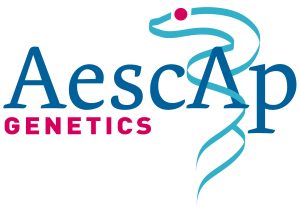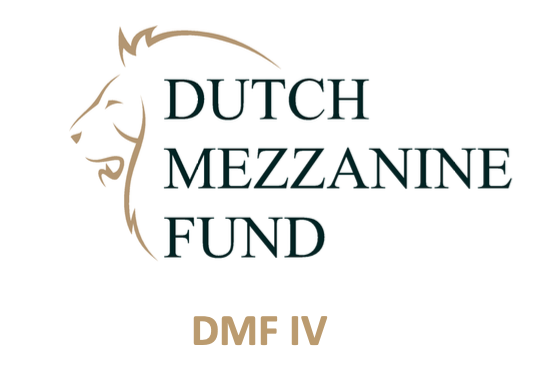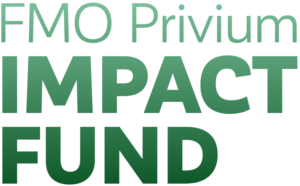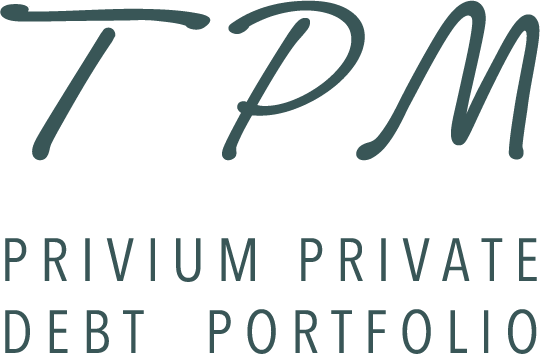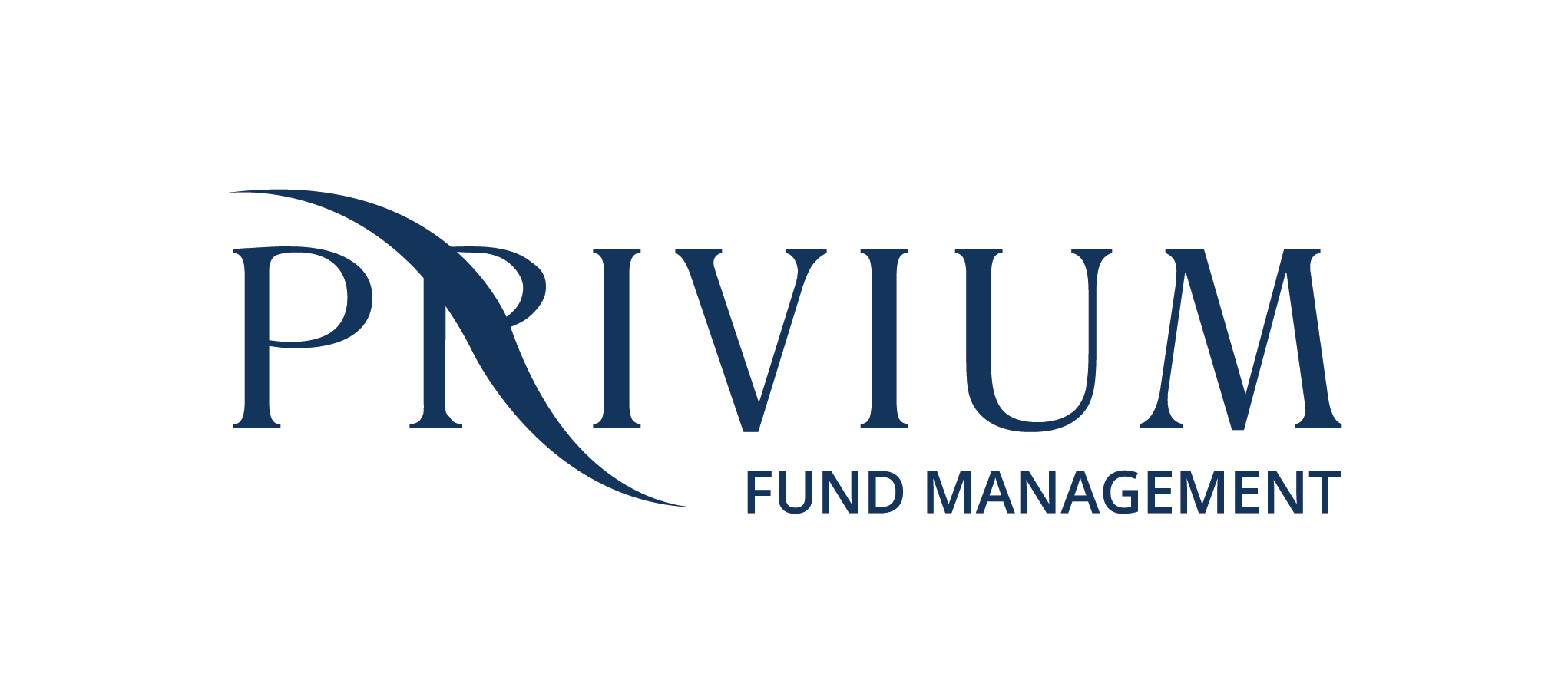Privium Sustainable Impact Fund’s objective is to achieve positive and measurable impact alongside long-term capital growth by making sustainable impact investments. The Fund invests in a diversified portfolio of listed and unlisted investment funds, investee companies and fixed income instruments. Investments are located in developed countries and emerging markets and may have an environmental or a social impact target.
Summary
The Privium Sustainable Impact Fund1 (PSIF, the Fund) was set up in collaboration with ABN AMRO Private Bank to offer sustainable and impact investments within the alternative asset class to its clients.
The objective of the Fund is to achieve positive and measurable impact alongside long term capital growth by making sustainable impact investments. The Fund invests in a diversified portfolio of listed and unlisted investment funds, investee companies and fixed income instruments with the intent to contribute to measurable positive social, and environmental impact alongside financial returns. The Fund invests 100 percent of invested capital in funds that are classified under article 9 of the European Union’s Sustainable Finance Disclosure Regulation (SFDR), or non-EU funds that make 100 percent sustainable investments based on proprietary analysis, and companies and financial instruments deemed to be sustainable based on proprietary analysis.
A minimum of 20 percent and maximum of 80 percent of the invested capital of the Fund will contribute to an environmental objective and a minimum of 20 percent and maximum of 80 percent of the invested capital of the Fund will contribute to a social objective. All of the Fund’s invested capital will be allocated to sustainable investments. Any other assets of the Fund are cash, money market instruments or instruments regarding foreign currency hedging and will make up no more than 25 percent of the Fund’s total Net Asset Value (NAV). As a result, a minimum of 75 percent of the Fund’s NAV will be invested in sustainable investments.
|
Invested Capital level |
Min – Max |
Total NAV level |
Min – Max |
|
|
Sustainable investments |
100% – 100% |
Sustainable investments |
75% – 100% |
|
|
Environmental objective |
20% – 80% |
Other (including cash) |
0% – 25% |
|
|
Social objective |
20% – 80% |
Environmental objective |
20% – 80% |
|
|
Social objective |
20% – 80% |
The Fund does not target a percentage of the invested capital to be aligned with the EU Taxonomy.
The Fund’s investments are categorised into multiple impact themes with the associated UN Sustainable Development Goals (SDGs). In its investment decision making process, the Fund considers the Principal Adverse Impacts (PAI) on sustainability issues as outlined in the SFDR.
The Fund has a multi-thematic approach, meaning an investment is categorised under a main impact theme. The impact themes currently being targeted by the Fund include:
- Social Objective: Financial Inclusion, Education, Social Impact
-
Environmental Objective: Renewable Energy, Natural Capital
The impact themes may change or be expanded on as the investment universe develops. Each theme aims to contribute to several UN SDGs. The impact of the Fund is measured according to each SDG using specific impact indicators.
The fund of fund structure limits the Fund’s direct influence on the underlying investments. Therefore, the Fund has a sustainability due diligence process in place. In its investment decision making process, the Fund considers the PAI on sustainability issues as outlined in the SFDR to assess that (potential) investments do no significant harm while contributing to the sustainable investment objective. In addition to considering the PAI, the Fund analyses the governance quality of the companies, organisations, funds and other investment vehicles managing the end investments. This analysis is aligned with international good governance standards.
Monitoring the attainment of the sustainable objective is done in monthly, quarterly and annual reporting while the Fund’s measurement, avoidance, mitigation and improvement on principal adverse impact indicators is reported annually in a separate PAI report.
No significant harm to the sustainable investment objective
In its investment decision making process, the Fund considers the PAI on sustainability issues as outlined in the SFDR to assess that (potential) investments do not significantly harm the sustainable investment objective.
As the Fund mainly invest in other funds, the Fund assesses if the target funds have:
- commitments, reporting, targets, policies and procedures in place which take PAI into account (where applicable)
-
assess underlying investments to confirm compliance with the Fund’s minimum sustainability criteria
Hence, the Fund is addressing the PAI as follows:
- negative screening/exclusions
- positive screening
- quality reviews of the manager’s commitments, reporting, targets, policies and procedures.
Depending on the underlying investment and impact theme, different PAI are prioritised.
As part of the investment process, the Fund performs a good governance analysis aligned with international standards. The Fund analyses the governance quality of the companies, organisations, funds and other investment vehicles managing the end investments. This analysis is based on a combination of international standards from the United Nations Principles for Responsible investment (UNPRI), UN Global Compact, the OECD Guidelines for Multinational Enterprises on Responsible Business Conduct, the UN Guiding Principles on Business and Human Rights, and the Sustainability Accounting Standards Board (SASB). Focus points for the analyses conducted include employee engagement, diversity and inclusion, business ethics, and operational and manager quality.
More details can be found in the SFDR Pre-Contractual Disclosure (Annex III).
Sustainable investment objective of the financial product
The objective of the Fund is to achieve positive and measurable impact alongside long term capital growth by making sustainable impact investments. The Fund invests in a diversified portfolio of listed and unlisted investment funds, investee companies and fixed income instruments with the intent to contribute to measurable positive social, economic and environmental impact alongside financial returns.
The Fund has a multi-thematic approach, meaning an investment is categorised under a main impact theme. The themes may change or be expanded on as the investment universe broadens. The impact themes currently being targeted by the Fund include:
- Social Objective: Financial Inclusion, Education, Social Impact
-
Environmental Objective: Renewable Energy and Natural Capital
Each impact theme aims to contribute to several UN SDGs. To identify how the Fund’s investments are contributing to the SDGs, the investments are categorised into impact themes based on their sustainable investment objective (social or environmental) or economic activities. The impact of the Fund is measured according to each SDG using specific impact indicators.
- Financial Inclusion: investments contributing to SDG 5 (Gender Equality), SDG 8 (Decent Work and Economic Growth) and SDG 10 (Reduced Inequalities)
- Education: investments contributing to SDG 4 (Quality Education) and SDG 10 (Reduced Inequalities)
- Renewable Energy: investments contributing to SDG 7 (Affordable and Clean Energy), SDG 9 (Industry, Innovation and Infrastructure) and SDG 13 (Climate Action)
- Natural Capital: contributes to SDG 6 (Clean Water and Sanitation), 13 (Climate Action) and 15 (Life on Land)
-
Social Impact: investments contributing to SDG 10 (Reduced Inequalities) and SDG 11 (Sustainable Cities and Communities)
More details can be found in the SFDR Pre-Contractual Disclosure (Annex III).
Investment strategy
The Fund’s objective is to achieve positive and measurable impact alongside long term capital growth by making sustainable impact investments. To achieve the Fund’s positive impact and long-term capital growth objective, the strategy of the Fund is to invest in a diversified portfolio of listed and unlisted investment funds, investee companies and fixed income instruments. The Fund makes investments in both developed countries and emerging markets and focuses on sustainable impact investments.
The alignment with the impact investment objective of the Fund drives the initial screening of a potential investment. Investments that do not aim to significantly contribute to at least one SDG or cannot report quantitatively on the Fund’s impact indicators are excluded from the investable universe.
Next, the Fund’s following minimum criteria are applied:
- Funds domiciled in the EU must be classified as SFDR article 9.
- Funds that are not subject to the SFDR, such as funds domiciled outside the EU, can nevertheless have a clear sustainability objective. The Fund can invest in such funds if they (i) align with the Fund’s sustainable investment objective and (ii) match the definition of ‘sustainable investment’ based on the Fund’s sustainability due diligence.
- All investee funds must be signatories of, or conform with, the UNPRI. This can be at fund level or investment manager level.
- All investee funds must comply with the exclusion list of the Fund.
- All investee funds must be able to fulfil the reporting requirements of the Fund.
The Fund analyses the governance quality of the investee companies, organizations, vehicles, and funds managing the ultimate investments. This analysis is based on a combination of international standards from the UNPRI, UN Global Compact, the OECD Guidelines for Multinational Enterprises the UN Guiding Principles on Business and Human Rights and the Sustainability Accounting Standards Board (SASB). Focus points for the analyses conducted include employee engagement, diversity & inclusion, business ethics, and operational and manager quality.
More details can be found in the SFDR Pre-Contractual Disclosure (Annex III).
Proportion of investments
The Fund invests 100% of its capital in:
- SFDR article 9 funds, or
- non-EU funds that make 100% sustainable investments based on proprietary analysis, or
- companies and financial instruments deemed to be sustainable based on proprietary analysis.
A minimum of 20 percent and maximum of 80 percent of the invested capital of the Fund will contribute to an environmental objective, and a minimum of 20 percent and maximum of 80 percent of the invested capital of the Fund will contribute to a social objective. Invested capital is defined as the investments in the above-mentioned assets.
The Fund aims to select as much of the investments as possible to be aligned with its sustainable objective. Fund investments that are not directly aligned with its sustainable objective are grouped in the category ‘Other’. An investment may be categorised as such for the following reasons:
- Cash or money market instruments: the Fund may hold cash or money market instruments committed to a planned investment, cash freely available for investment or cash for portfolio management purposes.
- Foreign currency hedging: the Fund may hedge its foreign currency exposure for portfolio management purposes. The Fund does not apply hedging instruments or other derivatives for other purposes.
It can be assumed that the category ‘Other’ will make up no more than 25 percent of the Fund’s total NAV, meaning that a minimum of 75 percent of the Fund’s NAV will be invested into sustainable investments.
|
Invested Capital level |
Min – Max |
Total NAV level |
Min – Max |
|
|
Sustainable investments |
100% – 100% |
Sustainable investments |
75% – 100% |
|
|
Environmental objective |
20% – 80% |
Other (including cash) |
0% – 25% |
|
|
Social objective |
20% – 80% |
Environmental objective |
20% – 80% |
|
|
Social objective |
20% – 80% |
The Fund does not specifically target environmental investments that aligned with the EU Taxonomy as part of its investment policy. The Fund’s minimum percentage of EU Taxonomy alignment is therefore zero percent.
More details can be found in the SFDR Pre-Contractual Disclosure (Annex III).
Monitoring of the sustainable investment objective
The Fund monitors the attainment of the sustainable investment objective as follows:
- Monthly monitoring of investment allocation towards the Fund’s sustainable investment objective.
- Quarterly monitoring of impact indicators per impact theme.
- All investments are monitored on an ongoing basis from both a financial and sustainability point of view. During this monitoring, the Fund maintains close contact with the investee funds and regularly engages with them to ensure their investments are aligned with the Fund’s sustainable investment objective.
The Fund reports on the attainment of the sustainable investment objective as follows:
- Monthly via the Fund update
- Annually via the:
- Impact Report
- Principle Adverse Impact Report
- (Interim) Financial Statements
More details can be found in the Fund’s prospectus and SFDR Pre-Contractual Disclosure (Annex III).
Methodologies
The impact of the Fund is being measured based on the information received from the underlying investments, including annual financial statements, impact and/or sustainability reports, or other periodic reporting information. Where the reporting date of an underlying investment deviates from the Fund, the most recent information is used.
The Fund uses the following methodology to measure the attainment of its sustainable objective.
|
Financial Inclusion (covering investments with a social objective) |
||
|
SDG |
Target |
Key Performance Indicator* |
|
5 (Gender Equality) |
Increase gender equality and empower women and girls by facilitating access to finance for women |
Percentage of loans to women |
|
8 (Decent Work and Economic Growth) |
Increase sustained, inclusive and sustainable economic growth, full and productive employment and decent work |
Number of entrepreneurs financed |
|
10 (Reduced Inequalities) |
Reduce the development gap between urban and rural communities in developing economies by increasing the number of loans to borrowers in rural areas |
Percentage of loans to borrowers in rural areas |
|
Education (covering investments with a social objective) |
||
|
SDG |
Objective |
Key Performance Indicator* |
|
4 (Quality Education) |
Ensure inclusive and equitable quality education and promote lifelong learning opportunities for all by providing loans to underprivileged students. Due to the fact that the related investment structure will mature as the loans will be repaid, the number of loans will decrease over time. |
Number of loans provided to students |
|
10 (Reduced Inequalities) |
Reduce inequality within and among countries by increasing the number of students from developing economies with access to higher education. Due to the fact that the related investment structure will mature as the loans will be repaid, the number of loans will decrease over time. |
Percentage of loans provided to students from non-high-income countries |
|
Social Impact (covering investments with a social objective) |
||
|
SDG |
Target |
Key Performance Indicator* |
|
10 (Reduced Inequalities) |
Reduce inequalities on a local level by providing disadvantaged people with essential services |
Number of disadvantaged people provided with essential services |
|
11 (Sustainable Cities and Communities) |
Make cities and communities inclusive, safe, resilient and sustainable by providing safe, affordable housing and basic services to disadvantaged people |
Number of disadvantaged people provided with affordable, quality homes |
|
Renewable Energy (covering investments with an environmental objective) |
||
|
SDG |
Target |
Key Performance Indicator* |
|
7 (Alternative and Clean Energy) |
Ensure access to affordable, reliable, sustainable and modern energy by increasing the share of renewable energy in the global energy mix |
The number of megawatt-hours generated or stored |
|
9 (Industry, Innovation and Infrastructure) |
Build resilient infrastructure, promote inclusive and sustainable industrialization and foster innovation by increasing the construction of renewable energy capacity and related infrastructure |
The number of megawatt renewable energy generation or storage capacity installed |
|
13 (Climate Action) |
Take urgent action to combat climate change and its impacts by avoiding CO2 emissions from fossil fuels by investing in renewable energy and CO2-saving projects |
The number of CO2 emissions avoided |
|
Natural Capital (covering investments with an environmental objective) |
||
|
SDG |
Target |
Key Performance Indicator* |
|
6 (Clean Water and Sanitation) |
Ensure sustainable management of water and sanitation by responsibly managing waterways in invested natural capital projects |
Kilometers of sustainably managed watercourses |
|
13 (Climate Action) |
Take urgent action to combat climate change and its impacts by avoiding CO2 emissions through investing in natural capital projects |
Portfolio sequestration of number of tonnes of CO2 emissions |
|
15 (Life on Land) |
Protect, restore and promote sustainable use of terrestrial ecosystems, sustainably manage forests, combat desertification, and halt and reverse land degradation and biodiversity loss by investing natural capital projects |
Number of hectares of sustainably managed land area |
* Based on the invested capital of the Fund.
More details can be found in the SFDR Pre-Contractual Disclosure (Annex III).
Data sources and processing
The Fund uses data for the following purposes:
- Investment sourcing
- Report on attainment of the sustainable investment objective
- Report on PAI
Data to source potential investments, and to report on the attainment the sustainable investment objective and PAI is used as follows by the Fund:
- Data sourcing: In the sustainability assessment of (potential) investments quantitative data is used where applicable and available. To collect and report PAI indicators as well as the sustainability risks the Fund’s manager uses specialised software.
- Data processing: The Fund processes data related to sustainability risks and PAI from investee funds via a third-party software provider, reviews the received data and does not modify the data.
No estimates are used in the sourcing and processing of data.
More details on the use of PAI data can be found in the latest PAI Report.
Limitations of methodologies and data
The Fund expects limitations to occur with the current methodologies and data collection process given that some investee funds are transitioning to new reporting methods required under the SFDR. As the financial industry matures, the availability and quality of data related to the Fund’s impact and PAI indicators are expected to improve.
Due diligence
The fund-of-funds structure limits the Fund’s direct influence on the underlying investments. Therefore, the Fund has a due diligence process in place to assess the sustainability and impact of the investee fund’s strategy and its underlying assets. The sustainability and impact due diligence process entails the following elements:
- Investment due diligence and advice: the investment advice by ABN AMRO Investment Services (AAIS) includes proposed investments for the Fund. The investment advice is structured according to a predetermined template including a dedicated sustainability paragraph and supported by a standard set of ESG and impact due diligence documentation. The investment advice contains the investment allocation to an impact theme and therefore the contribution to the Fund’s sustainable investment objective.
- The Fund’s manager reviews the investment advice provided by AAIS during the monthly Investment Advisory Committee meeting. The key elements reviewed are, where relevant:
– Sustainability policies at the level of the investee fund’s manager
– Policies and sustainable investment guidelines for the investee fund
– Sustainability integration in the investment process
– Sustainability resources and capacity
– Do no significant harm and good governance assessment
– Contribution of investee fund to impact target of underlying investments
– Sensitivity to material environmental, social and governance (ESG) risk factors - The Fund’s manager reviews AAIS’s ESG policy and due diligence process regularly.
- All investments and their contribution to the Fund’s sustainable investment objective are independently audited on an annual basis.
More details can be found in the Fund’s prospectus and SFDR Pre-Contractual Disclosure (Annex III).
Engagement policies
The Fund upholds the following approach with regard to engagement with its investee funds:
- Engagement with investee fund board and/or manager: The Fund regularly engages with its investee fund board and/or manager, where relevant. Engagement can take place by the Fund’s manager, AAIS, or both. Engagement topics are primarily based on the sustainability assessments performed. Where impact and/or PAI data is found to be missing or insufficient in the investee fund’s reporting, the Fund will engage with the respective fund board and/or manager to remedy this. The Fund prioritises the engagement topics by considering the applicability of PAI on the various impact themes in the portfolio. The Fund’s manager aims to at least engage with each investee fund annually. All engagement activities and topics are tracked by the Fund’s manager.
- Voting: As a result of its investments, the Fund has acquired voting rights for many of its holdings. The Fund’s manager, on behalf of the Fund, uses the option to vote by proxy during annual general meetings as well as interim or special meetings. Voting preparation (advice) and voting execution may in certain cases be outsourced to an external party. In principle, voting will occur in line with the Dutch corporate governance code and relevant international corporate governance codes. Proposed changes to an investee fund’s investment mandate, activities or targeted geographies are reviewed given the required alignment with the Fund’s minimum criteria.
- Ongoing monitoring and divestment: All investments are monitored on an ongoing basis from both a financial and sustainability perspective. With regards to sustainability, the Fund could find that an investee fund has invested in assets that do not fit the Fund’s sustainable investment objective, no longer passes the ‘do no significant harm’ screening or no longer practices good governance. For instance, this could happen when an investee fund expands its investment mandate. When an issue is detected, the Fund’s manager and/or AAIS engages with the investee fund to (i) understand the reason for the issue and decide if it is expected to remain stable, increase or decrease over time, (ii) investigate what actions are planned and/or can be taken to resolve the issue, and (iii) assist with resolving the issue, where relevant. If the sustainability profile is not expected to improve within a set timeframe, the Fund will divest the position.
More details on engagement by the Fund can be found in the latest PAI Report.
Attainment of the sustainable investment objective
The Fund does not compare its impact performance to a benchmark or index but instead reports its contribution to the SDGs both quantitatively and qualitatively.
More details on the impact achieved by the Fund can be found in the latest Impact Report.
1 Legal Entity Identifier: 213800VO9NMXOYQAK271
Reporting
- Annual Report PSIF 2024
- Annual Report PSIF 2023
- Annual Report PSIF 2022
- Interim Financial Statements PSIF 2025
- Interim Financial Statements PSIF 2024
- Interim Financial Statements PSIF 2023
- Interim Financial Statements PSIF 2022
- Impact Report PSIF 2024 (EN)
- Impact Report PSIF 2024 (NL)
- Impact Report PSIF 2023 (EN)
- Impact Report PSIF 2023 (NL)
- Impact Report PSIF 2022 (EN)
- Impact Report PSIF 2022 (NL)
- Monthly NAV and performance statement PSIF
Prospectus
- Prospectus PSIF
- Supplement I to Prospectus PSIF
- Explanation Supplement I PSIF
- SFDR Pre-contractual disclosure document PSIF (version 2.3, November 2024)
- PAI Report PSIF
Capital Distribution
Key Information Document
Forms


